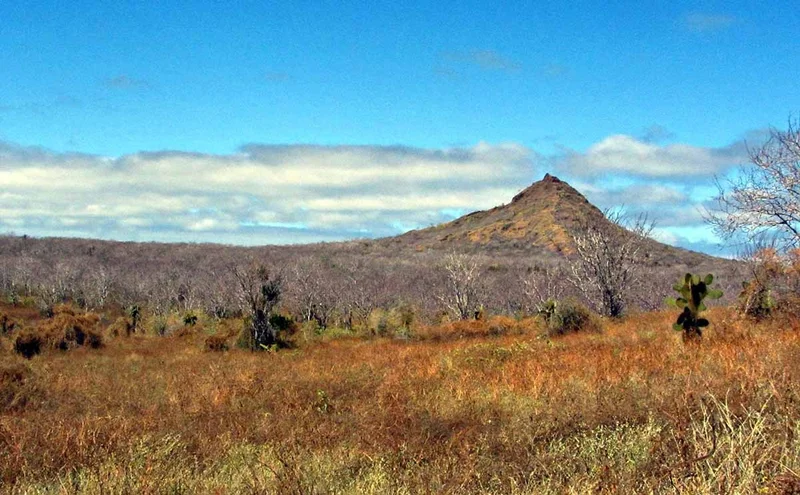
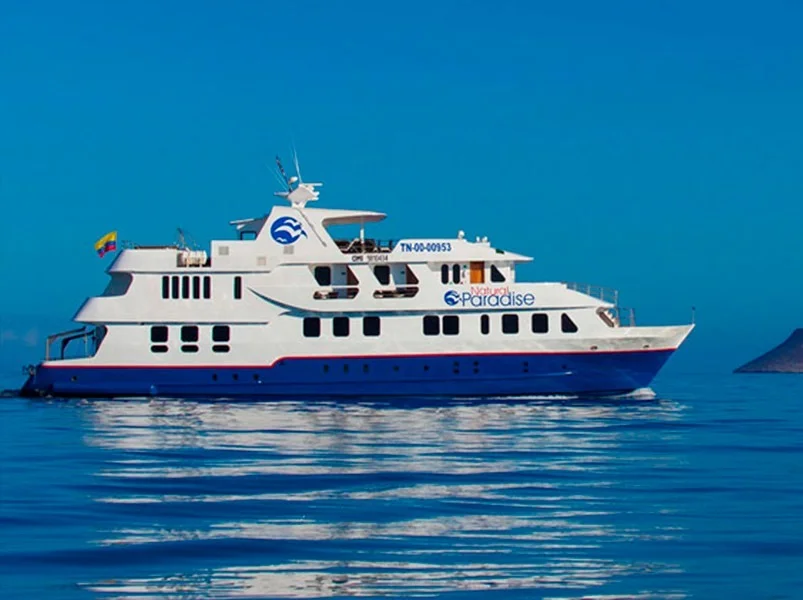
5 Day Galapagos Itinerary
Day 1: San Cristobal Island: Kicker Rock
Kicker Rock
This striking rock formation is located a couple hours off the western shore of San Cristobal. Jutting out of the water, the rocks stand vertically at hundreds of feet above the ocean divided by a small channel. Although there are no landing areas, circumnavigation and dinghy rides allow visitors to spot a variety of marine life.Day 2: North Seymour Island & South Plaza Island
North Seymour Island
The island was formed by a series of submarine lava containing layers of sediment that were uplifted by tectonic activity. The island is characterized by its arid vegetation zone; you will enjoy dinghy ride and hiking on this beautiful island.
South Plaza Island
Day 3: Rabida Island & Bartolome Island
Rabida Island
Rabida Island (Jervis) is one of the most colorful and volcanically varied islands in the archipelago and a great snorkeling site. It houses a picturesque maroon sandy beach and stunning viewpoints of amazing landscapes. The island is a birdwatcher’s delight: Galapagos hawks, nine varieties of finches, brown pelicans, large-billed flycatchers, and more.
Bartolome Island
You will head to Bartholomew Island where the famous Pinnacle Rock is found. Bartholomew consists of an extinct volcano with a variety of red, orange, black and even green volcanic formations. We will take a trail of stairs to the summit of the volcano (about 30 or 40 minutes) where you will enjoy one of the best views of the islands! You will also visit a small, beautiful beach surrounded by the only vegetation found on this barren island. The beach is perfect for snorkeling where you may even see and swim with Galapagos penguins.
Day 4: Santiago Island: Sullivan Bay & Santa Cruz Island: Dragon Hill
Santiago Island: Sullivan Bay
You will visit Sullivan Bay located on the southeast part of Santiago. This place is interesting for its geology because the area is covered by lava flows. This place has elevations in the form of small volcanoes formed by the lava flows.
Santa Cruz Island: Dragon Hill
The visitors’ site at Dragon Hill is located in northwestern Santa Cruz Island and consists of a 1,600 m long trail that runs through three different environments. The beach is very rocky. At high tide it’s a nice place for snorkeling. At this visiting site you can find vegetation of the typical intertidal zone and dry zone.
Day 5: Santa Cruz Island & Baltra Island: Twin Craters & Transfer out
Los Gemelos, or the Twin Craters, are located opposite each other on both sides of the road leading from Puerto Ayora to Baltra. The name is only figurative; not real craters, these formations were created by the collapse of surface material in underground fissures and chambers. The view is breathtaking.
Continue to Baltra Airport to board your flight back to the Mainland.
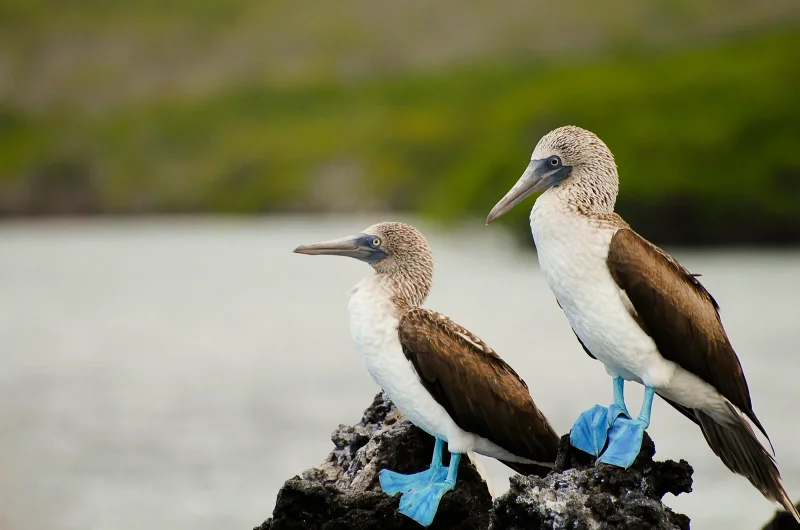


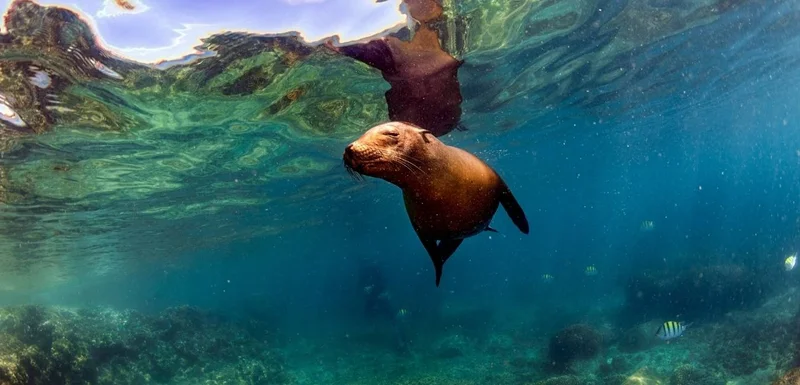
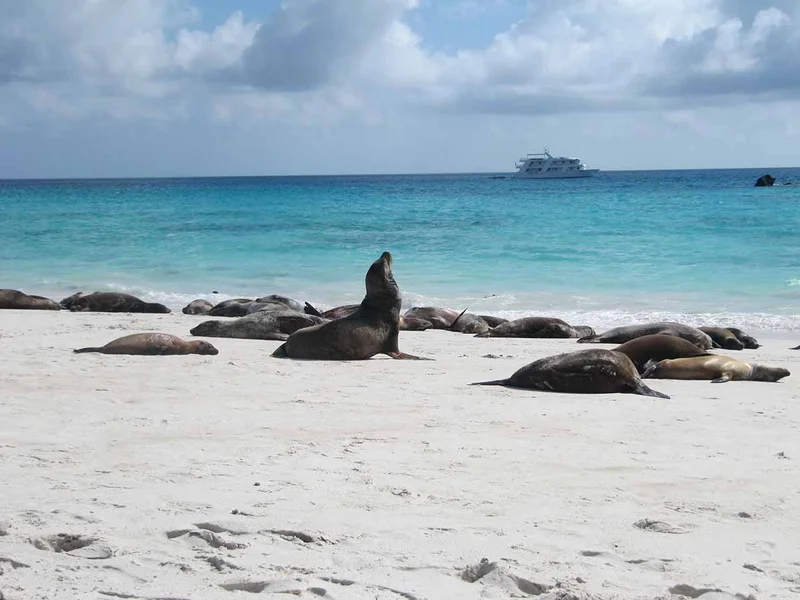
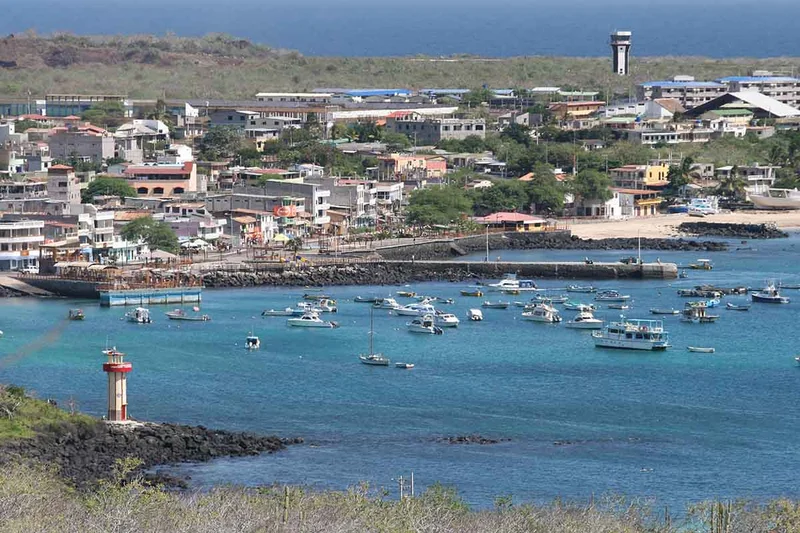

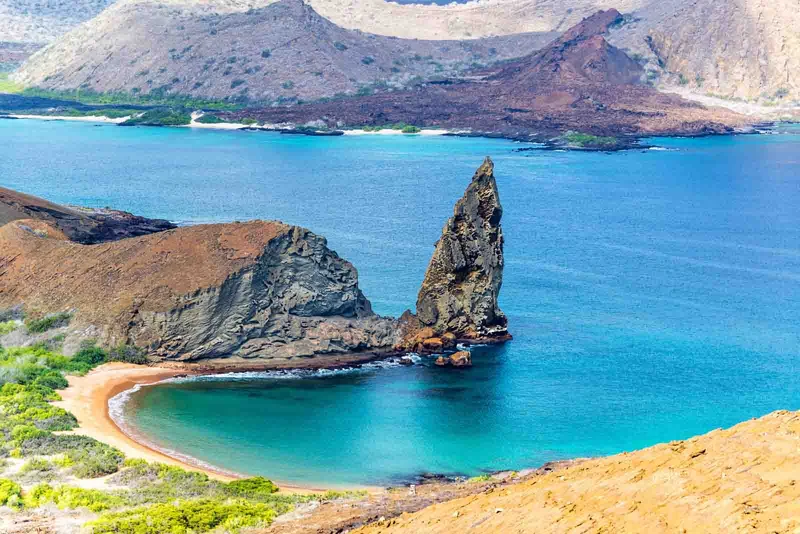

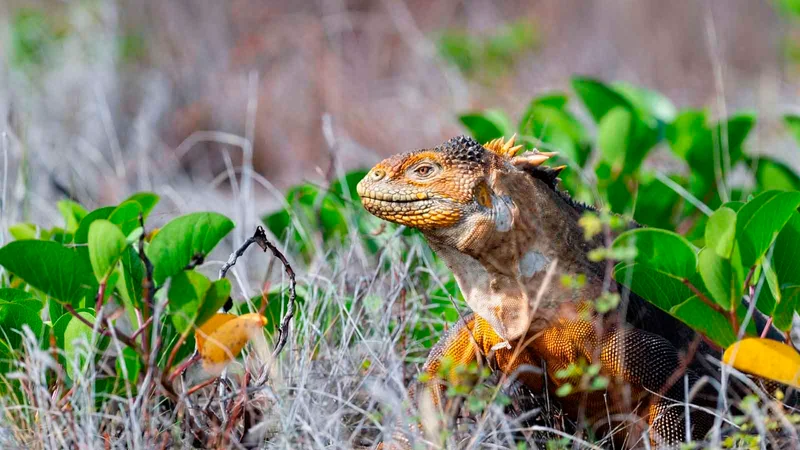





5 Day Galapagos Itinerary Includes
- All programed visits as per itinerary with specialized naturalist bilingual guide
- Accommodation in twin/double cabin with private facilities (some with balcony), all meals on board, drinking purified water, coffee and tea
- Snorkeling equipment (fins, mask & snorkel), Wet-suits & sea-kayaks
- Transfers within the islands on cruise dates as per itinerary
- Personalized 24/7 assistance during tour
5 Day Galapagos Itinerary Does not Include
- Airfare to/from Galapagos from/to Mainland Ecuador (to be added)
- Galapagos National Park Entrance Fee US$200 per person (in cash only upon arrival)
- Galapagos Migration Card US$20 in cash per person (at Mainland’s Airport)
- Alcoholic/soft drinks, personal expenses, extras, tips and other services not specified in the program
- All sizes wet-suits for rent on board (in cash)
- Travel, medical & cancelation Insurance and any services on Mainland
- International Flights to Ecuador
5 Day Galapagos Itinerary Highlights
- Enjoy a refreshing cocktail while observing the sunset from the boat’s fantastic sun-deck
- Frigate birds, blue footed boobies, sea lions and more in the enchanting North Seymour Island
- Climb your way at Bartolome to amaze with wonderful panoramic views at Pinnacle Rock
- South Plaza, a marvelous site to observe the endemic land iguanas on their natural habitat
- The perfect complement to your journey: snorkeling at Sullivan Bay
Itinerary Map

Dates & Promotions
Dates |
|---|
No data |
Reviews
Animals you might see on this itinerary:
More information about the Galapagos Islands you visit in this 5 day itinerary:
Enchanted Central Islands Luxury Exploration - Natural Paradise Yacht
Why travel with us?
Similar Itineraries
